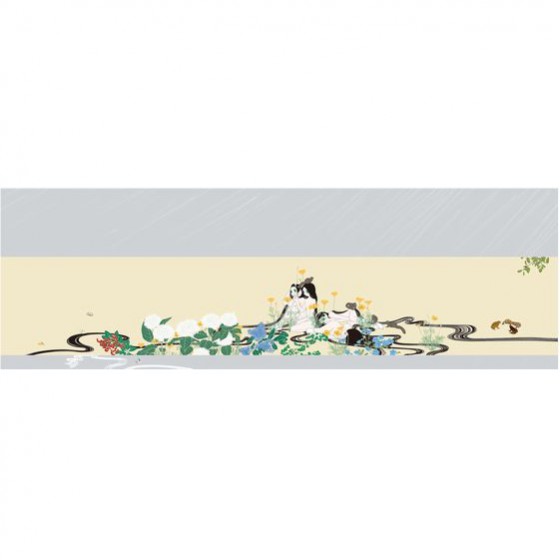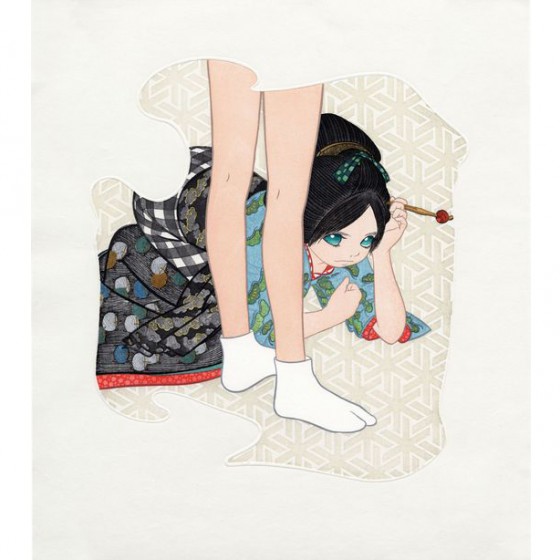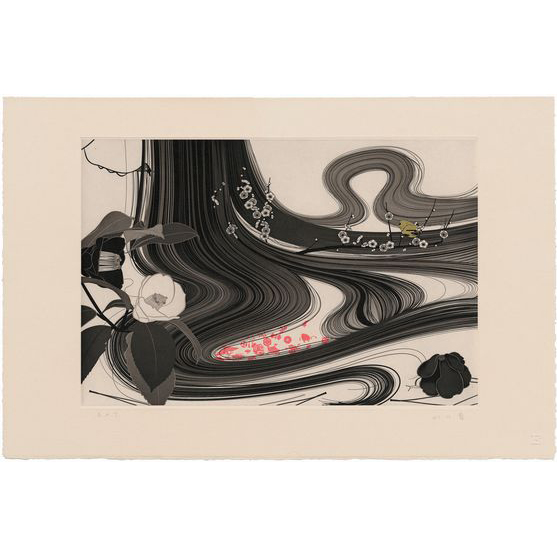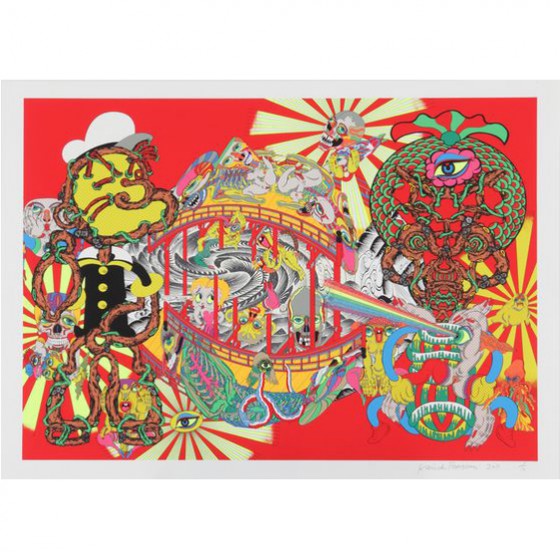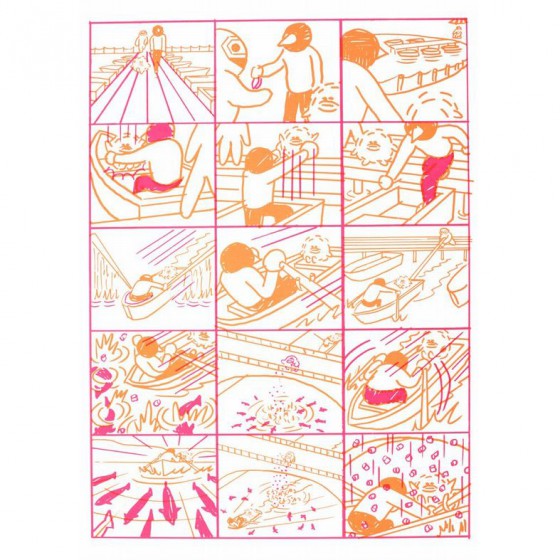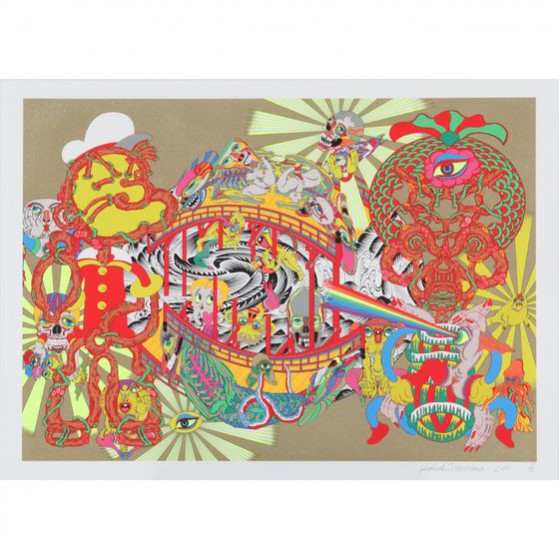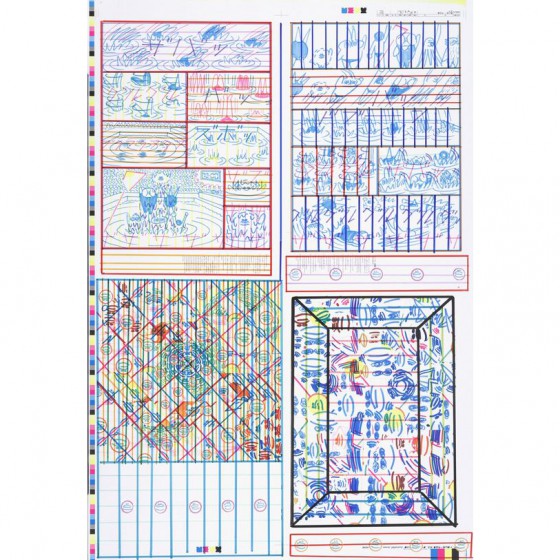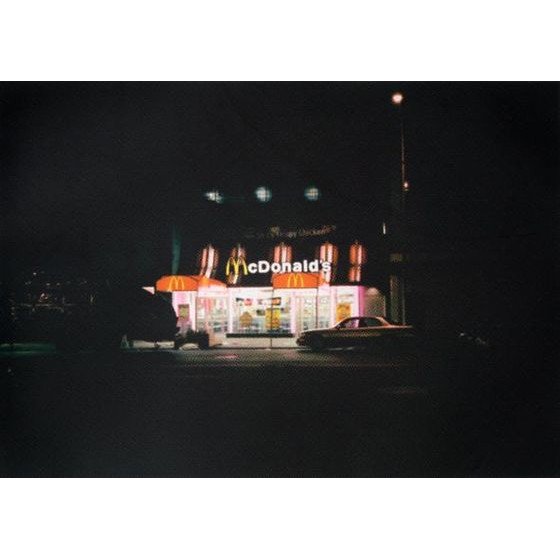hanasu koto wa kono yama hodo
$1,600
Artist: Ai Yamaguchi
Size:?H13.4 x W36.6in (H34 x W93cm, image size)
Year: 2008
Edition:?50
Medium:?digital print and silkscreen on Kizuki Sarashi (Japanese handmade paper)
Signed on the back
Delivery Time: 2 weeks
The motifs that Yamaguchi uses in order to build her artistic vision is often inspired by Japanese art from the early 16th century to the late Edo period, but her style is also uniquely informed by a characteristic flatness and decorative tendencies, making her artistic interpretations truly one-of-a-kind and original. The characters she depicts are often blended into the design of kimono which are designed to be flat in perspective yet decorative, rendering her pieces extremely two-dimensional and similar to the lines found in?kare-san-sui?(traditional Japanese landscape garden). Her flat works emphasize lines as well as distort colors and shapes. While her works are certainly expressed in the form of planes, Yamaguchi does not seem to clearly define whether this expression takes place in two-dimensional or three-dimensional form, and freely steps over the conventional boundaries that set the two perspectives apart.
After a break of 5 years, Yamaguchi held a solo exhibition at Roberts&Tilton in 2008. The main artwork at the exhibition involved the construction of a large barrel-like objet d’art, in which the viewer would enter and be surrounded by paintings, giving the impression that he is part of the artwork itself. The artwork was meant to feel like a ‘personal experience’. Created alongside the objet d’art, this woodblock print follows the same theme in attempting to make art portable, personally accessible and within reach, like a scroll you can unravel. In a similar fashion, the painting is done as a long, slim and narrow piece. In comparison to the objet d’art which created a dark, gloomy, almost claustrophobic experience for the viewer, this print artwork conjures up a much lighter, freer, almost impressionistic mood.
The main technique used in this piece is a digital print on handmade Japanese paper. The Japanese paper was personally crafted by hand in a studio, piece by piece, and then processed using special means. The digital print was then clearly and distinctly printed on the paper without destroying its texture. Then, in order to furnish the silver-grey portions of the painting above and below with a shimmery pearl lustre, a silkscreen layer was added over the digital print.




